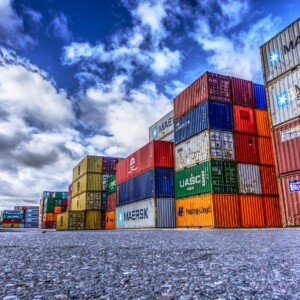Shipping containers have surged in popularity as affordable, adaptable, and environmentally friendly solutions for various needs. Whether you desire a stunning home, a functional office, or secure storage, purchasing a shipping container can be a wise investment. However, it’s crucial to approach this process with care and expertise to ensure you select the ideal container. In this blog post, we will take you step-by-step through buying a shipping container, including choosing the right type, assessing its condition, and coordinating delivery. Get ready to make a smart choice and dive into the world of shipping container possibilities.
Determine Your Requirements
Determining your specific needs and requirements is vital before beginning the buying process. Factors to consider include size, condition, purpose, and budget. There are various sizes of shipping containers available, such as 20-foot, 40-foot, and larger options. Additionally, you’ll need to decide if a new or used container is suitable and if any extra features or modifications are necessary. Lastly, consider the purpose of the container you need. Depending on if you need it for shipping, storage, or conversion can determine what type of container you need.
Research Reliable Suppliers
Researching reputable suppliers is essential for a seamless purchasing experience and high-quality containers. Seek out suppliers with a proven track record, positive customer reviews, and a diverse range of containers. Local suppliers and online platforms specializing in shipping container sales are worth exploring. Engage with suppliers who provide transparent product information and offer assistance throughout the buying process.
Choose the Right Type of Container
Shipping containers come in different types, each suited for specific purposes. Choose from various types, including standard dry containers, refrigerated containers, open-top containers, and high cube containers. Find the ideal solution to meet your specific requirements. If temperature-controlled storage is a must, opt for a refrigerated container.
Choosing the Right Container Grade
Once you’ve determined the most suitable container type, the next crucial decision is selecting the appropriate container grading. This choice will depend on your specific cargo requirements and is essential for seamless customs clearance. Here is an overview of the different container gradings available:
- New/One-Trip Containers: Opt for “New” or “one-trip” containers produced in China and directly shipped to the United States. These containers are the ideal choice for converting them into a home due to their exceptional weather resistance and minimal damage.
- Cargo-Worthy Containers: This shipping container is approved for cargo transportation, making it the perfect choice for shipping your cargo. It is also worth noting that used containers are included in this category.
- Wind & Water Tight Containers: A container is considered wind and water-tight when it prevents wind or water from entering. These containers have received multiple repairs and are commonly utilized for storage purposes.
- As Is Containers: Containers listed as “as is” may or may not be durable enough to withstand outdoor conditions and may have potential structural damage.
Consider Delivery and Transportation
When purchasing a used shipping container, a comprehensive inspection is paramount to guarantee its quality and condition. Look out for indications of rust, dents, or structural impairment. Assess the doors and hinges to ensure they operate seamlessly. Scrutinize the flooring for any signs of decay or water damage. While minor wear and tear can be anticipated, it is crucial to steer clear of containers with extensive damage that may jeopardize their integrity.
Understand Local Regulations and Permits
Before making your purchase, it’s important to understand and comply with any local regulations or permits that may apply to your desired use of the shipping container. Depending on your location and intentions, you may need permits for modifications, zoning compliance, or an occupancy certificate to convert the container into a living space. Consult with local authorities to ensure you meet all necessary requirements and avoid potential issues.
Additional Considerations
In addition to the container itself, it is important to consider other factors. Take the time to review the supplier’s warranty policy and after-sales support. Discuss pricing, payment options, and possible additional fees, such as delivery charges or customization costs. Collect all the necessary paperwork, including invoices and ownership documentation.
Conclusion
Make a wise investment in a shipping container by following this comprehensive guide. Discover a versatile solution for your various needs and ensure you choose the right container that meets your requirements. Take the time to research reliable suppliers, thoroughly inspect the container, and consider important factors such as delivery, local regulations, and additional costs. With careful planning and consideration, you can acquire a shipping container that perfectly suits your needs. Start your journey now.





